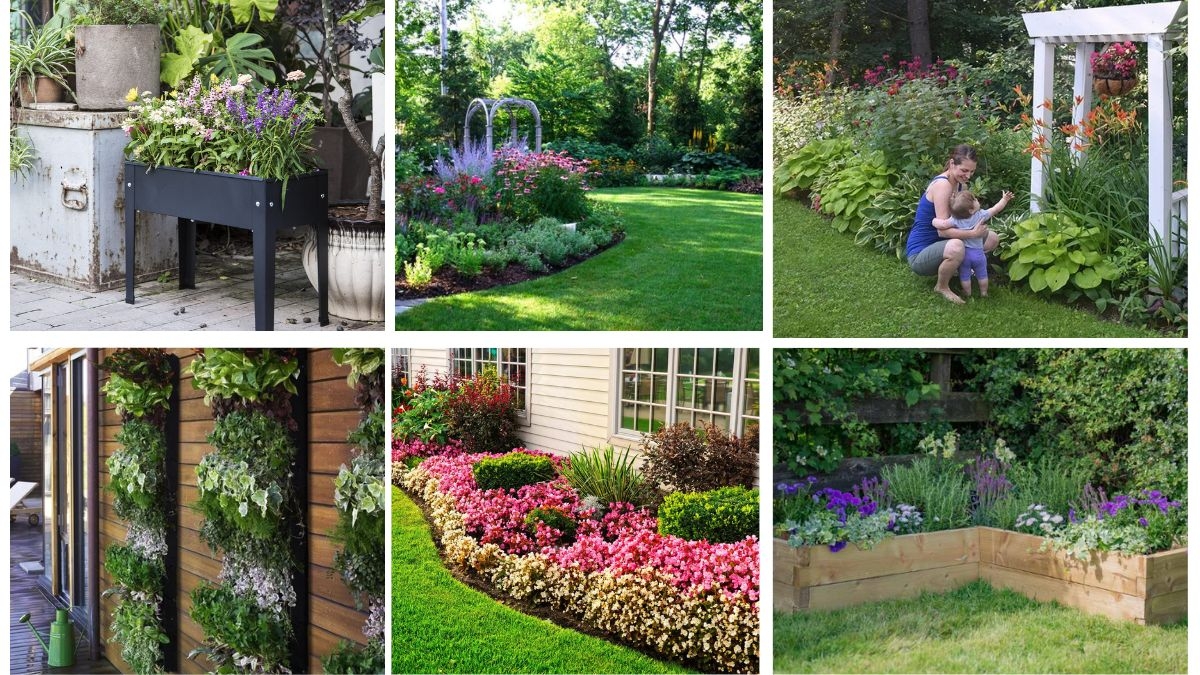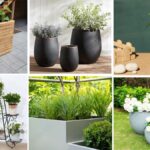Air circulation is one of the most important yet often overlooked parts of garden design. When fresh air moves freely around your plants, it helps prevent common problems like mold, mildew, pests, and excess humidity. A well-ventilated garden also makes the outdoor space more pleasant for you. By using clever flower bed layouts and materials, you can boost airflow while keeping your garden stylish and modern. Let’s explore 7 modern flower bed ideas that promote better air circulation and healthier plant growth.
1. Elevated Planter Beds with Open Sides
Raised flower beds are not just about ease of maintenance—they also greatly improve air circulation. When these beds are built with open sides made of slatted wood, metal mesh, or perforated materials, air can flow underneath and around the plants. This design reduces humidity at the soil level and helps keep roots dry and healthy, minimizing the risk of root rot.
Choose modern materials like corten steel or composite wood to give your garden a sleek, industrial look. The raised height also makes weeding and watering easier, while the open design adds a clean, airy feel to your space.
2. Geometric Flower Beds with Space Between
Instead of one big flower bed, try breaking it into smaller geometric beds—like squares, triangles, or hexagons—with space between them. This layout naturally creates air corridors around each bed. These spaces allow wind to pass through and prevent plant overcrowding.
You can fill the space between beds with gravel, mulch, or lawn to keep things tidy and breathable. This design adds a modern, structured look while also keeping the plants healthy and well-ventilated.
3. Vertical Flower Bed Walls with Breathing Room
Vertical gardens are perfect for small or urban spaces, and they can be great for air circulation too. These gardens use walls, fences, or standalone frames to grow plants upward. Since plants are spread out vertically, air can move freely between them, reducing humidity and limiting fungal diseases.
Use breathable pockets or modular planters made of fabric, mesh, or plastic. Herbs, succulents, and flowering vines do particularly well in vertical beds. This design brings life to walls and fences while boosting air quality and plant health.
4. Tiered Flower Beds with Different Plant Heights
Tiered flower beds use a step-like structure to separate plants by height. Tall plants go in the back, medium-sized ones in the middle, and shorter plants in front. This setup allows air to move smoothly from the bottom layer to the top, reducing plant competition and shading.
You can use natural stone, steel, or wood for a neat and modern finish. Not only does this design improve airflow, but it also makes it easier to access and water each layer. It’s a great way to organize your garden with structure and purpose.
5. Floating Flower Beds with Clearance Below
“Floating” flower beds are raised structures designed to appear as if they are hovering above the ground. They are usually supported by slender legs or minimalist frames, allowing air to circulate freely underneath. This keeps the area cooler and drier, especially on patios or paved surfaces.
These beds work well in hot or humid climates because they reduce ground-level moisture buildup. Plus, their clean design looks stylish and adds a sense of space and openness to your garden.
6. Circular Flower Beds with Open Centers
Circular beds are visually pleasing, but they can also improve air flow when designed with a hollow or open center. The gap in the middle allows wind to move in a circular pattern around the plants, keeping leaves dry and the air fresh.
You can fill the center space with gravel, a decorative sculpture, or even a small tree that helps purify the air. This layout works especially well in breezy areas, where natural airflow can swirl and help control humidity levels.
7. Modular Flower Beds with Interlocking Patterns
Modular flower beds are made from individual units that can be arranged in custom patterns. You can create interlocking designs that naturally leave space between plant sections. These gaps act as built-in ventilation paths, encouraging airflow through the entire garden area.
Materials like concrete blocks, recycled wood, or metal frames give these beds a modern and adaptable feel. They’re perfect for gardeners who like to experiment with layout or want to expand the garden over time. The result is a living space that’s flexible, stylish, and well-ventilated.
Why Air Circulation Matters in Garden Design
Plants need air just like we do. Poor air circulation can lead to a number of problems:
-
Increased Humidity: Leads to mold and mildew.
-
Pest Problems: Moist, still air attracts insects.
-
Plant Disease: Fungal infections spread faster in stale air.
-
Overheating: Poor ventilation traps heat around plants and soil.
By designing your flower beds with airflow in mind, you can prevent many of these issues. Healthier plants also mean fewer chemicals, less maintenance, and a more enjoyable outdoor experience.
Final Thoughts: Combine Style and Function
Modern garden design is about more than just looking good—it’s about creating a space that works well for both you and your plants. These 7 flower bed ideas show that you don’t have to sacrifice beauty to improve air circulation.
Whether you choose floating beds, vertical gardens, or modular layouts, each design offers unique benefits for airflow and plant health. With thoughtful planning, your garden can be both a relaxing retreat and a thriving ecosystem that breathes with life.










